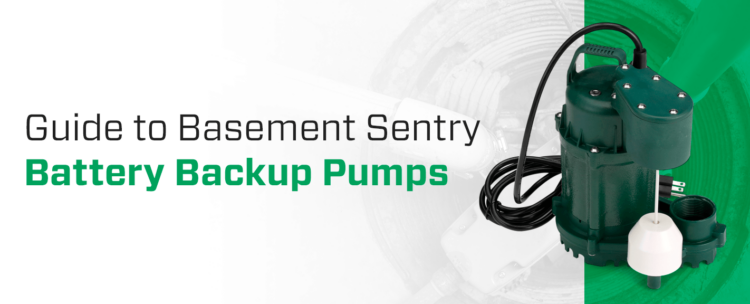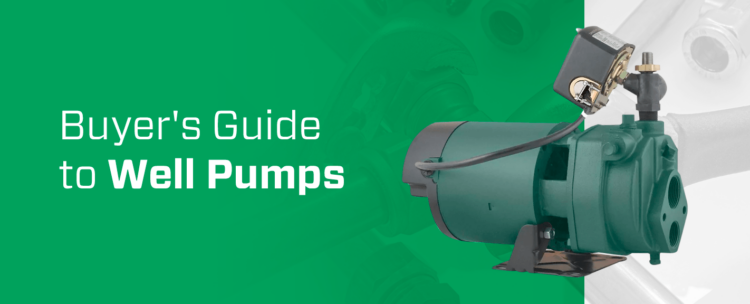
As a homeowner, you have many things to maintain and consider. The last thing you need is your basement flooding (again). Leaks and water damage don’t just affect your basement by itself — they impact your entire home, your wallet and your peace of mind.
Rot, mold and structural damage from excess moisture can create an uncomfortable living space and set you back financially. But how do you avoid flooding and leaks, especially when storms can happen at a moment’s notice?
The answer is prevention. When you understand how water gets into a basement, and can prevent that from happening in the first place, you set yourself up well to avoid a ripple effect of leaks and structural damage.
How Can Water Enter Your Basement?
Put simply, water enters through the foundation, walls, doors and windows. When moisture gets into these spaces without you knowing, it can build up over time, seep into your home and cause damage. Understanding where and how water gets into your home can help you find and fix the sources of the problem and ultimately prevent damage to your foundation and belongings. Here are common places water enters your basement.
Cove Joints
Cove joints are the seams where the foundation and the wall meet. Water can often enter at the cove joints due to improper underground drainage and groundwater buildup. When subsurface moisture has nowhere to go, it comes to the surface. It will eventually move toward and seep through the path of least resistance — the seams between your foundation and wall.
Cold Pour Wall Joints
Cold pour joints, the space between the first and second concrete layers, can be an access point for water. When the initial layer sets before the second, they do not bind or seal to each other properly, creating gaps, cavities or honeycombing. Rainwater and excess moisture can build up in the concrete and seep through these cavities.
Underground Water Sources
Stagnant water in underground springs and wells can move or be forced to the basement floor by hydrostatic pressure. When this water builds up in the soil, it becomes saturated with nowhere to go. Gravity will eventually push excess moisture to your foundation, seeping through the concrete and cracks in the floor.
Windows and Doors
Without adequate outdoor drainage, water can pool around your home’s exterior and filter through doors and windows into your basement. Your foundation may slop inwards, meaning water will stream toward your home and collect around your exterior walls — eventually getting in instead of being filtered away.
Foundation Cracks
Like cove joints, if moisture builds in your substructure, gravity pushes it up through the path of least resistance, which is often foundational cracks. Excess moisture can seep into your home through these cracks, even if you’ve sealed them.
Floor Drains or Plumbing Fixtures
Water can enter through floor drains and plumbing fixtures. When underground plumbing pipes wear or corrode, they can leak and create moisture buildup underground. Floor drains can also become blocked, causing burst or leaky pipes that send water into your foundation.
Concrete Form Ties Around the Foundation Wall
Builders put steel ties around the foundation when pouring cement. These ties help form and set the concrete shape. The builders then cut off the excess ties to prevent them from protruding from the wall. Typically, they will patch the end of the tie to prevent moisture from entering the foundation through these components.
If the ties are not sealed or cut off correctly, they can get wet in the rain. Excess moisture will start to rust and corrode the steel ties, leaving a gap for water to seep into the foundation.
Reasons Water Enters Your Basement
It’s one thing to know where water gets into your basement — it’s another to find the source of the problem. Here are common reasons why basements can flood:
- Internal leak: Kitchen, sink, shower or bathroom pipe leaks might go unnoticed, leading to moisture buildup and structural damage.
- Blockages and backups: Blocked sewers and drains can result in burst pipes and leaks, and can cause an overflow from underground water.
- Improper damp proofing: Outside moisture can seep into the concrete if your walls are not correctly damp proofed.
- Missing or faulty downspouts: Without properly installed or functional downspouts, rainwater will accumulate around your home and then stream into the basement.
- Interior moisture: Humidifiers, dryers, kitchen fans and bathroom fans create excess moisture in your home. When moisture accumulates in the understructure and walls, it eventually pushes through the surface.
- Improper or no drainage system: A sump pump or drainage system directs water away from your home. Without an effective drainage system, water will collect in your basement.

How to Stop Water From Entering Your Basement
Follow these steps to keep water out:
Find the Source
Inspect areas like the cove joints, cracks and foundation for signs of moisture damage. After a storm, look for roof and internal leaks and water runoff. You should also check if your gutters and drainage systems effectively filter water away.
Waterproof the Exterior Basement Wall
Check your pitch level and identify if your slope is directed toward your house. If so, build up your exterior walls with soil to create a high pitch for funneling water away. Fill in cracks in your sidewalks and pavements to prevent rain and snow from seeping into the soil and your foundation.
Redirect Water Away From Your Home
Install downspouts and ensure they are long enough and that you position the openings away from your home. You can also install a sump pump. A sump pump will collect excess moisture and runoff and divert it away from your basement.
Install a Backup Sump Pump
If you have a power outage, you must ensure your sump works to funnel away water effectively, especially in extreme conditions like hurricanes. A backup sump pump has a backup battery to pump water out without electricity.
Remove Basement Water With Solutions From Zoeller at Home
Zoeller at Home is a trusted name in water removal solutions, including basement sentry systems, sump pumps and more. With over 80 years of experience, we understand the importance of durable, efficient and versatile solutions for water removal. Explore our range of products to prevent water buildup in your basement and home.
Locate a retailer near you to find our products in your area.




